Kids Need Science is devoted to simplifying science, technology, engineering and math words, names, and concepts so that everyone can participate in a conversation about science. Check back often for an interesting, easy-to-read, science word explained (almost) every day. Science Words Made Simple!
Don't wanna be here? Send us removal request.
Photo

The Avocado and Testicles,
Or, Your Cinco de Mayo Party Trivia
It is estimated that almost 20% of the entire half billion ton production of American avocados will be consumed today on Cinco de Mayo, which makes sense, as few things say (or taste) more like Mexico than this fruit. Cultivated for 12,000 years in Central America, the avocado as we know it is thought to have originated in Puebla, Mexico, though the fossil record shows it as far north as California and as far south as Peru. First use of the word in English goes back to 1696 but didn’t see much use for a century, though the Spanish were using it for two centuries prior to its arrival in English. In Spanish, the word has been linked to the word avocado meaning lawyer or advocate passing through the earlier Spanish word aguacate, but these were probably just homonyms of the Nahuatl (Aztec) word ahuakatl indicating the tree and fruit. It should be noted here that the Nahuatl word had a secondary meaning of testicle, probably because the one resembled the other. Several modern languages keep this homonym confusion with the Spanish word for lawyer-the French call it an avocat, for example, meaning lawyer.
Adding to the naming confusion, when Carl Linneaus arrived in the Americas and named everything he could get his hands on, he named the avocado the Persea americana, presumably, again, for its resemblance to something, this time the pear. I suppose we should be grateful that we don’t call them American testicles. Final bit of trivia for tonight: the avocado is technically a berry, and not a vegetable!
Image of Avocado courtesy camknows via flickr, used with permission under a Creative Commons 3.0 license. Click on his name to see more work.
31 notes
·
View notes
Photo


COVID-19, or the Coronavirus
Yes, these things have a name rooted in Ancient Greek, but they also have a discoverer, and someone who names them. In this case, the coronavirus was known and isolated as early as the 1930s, but it wasn’t until electron microscopes were utilized in the 1960s that scientists knew that they actually looked like. In this case, the scientist was June Almeida, a Scottish scientist only two years out of school who told virologist David Tyrell that using her technique she could provide images of the viruses he was studying. He sent samples (see left image above) and was able to identify many previously unidentified viruses. In 1966, Almeida produced images clear enough to identify characteristics specific enough to name them, and she met with Tyrell to give the virus its name. Noting the halo protruding from the main body of the virus resembled the corona of the sun, they named it the coronavirus. The Latin word corona means a crown, or garland, such as a laurel garland given in victory. The English word virus is borrowed directly from the Latin word virus, meaning poison, or poisonous sap from trees or plants, or a powerful (poisonous) drink. It was first used in a medical sense in English in 1728 to denote a venereal disease, and took its modern meaning around 1880. First use to denote a computer virus goes all the way back to 1972! The term COVID-19 is a portmanteau from CO(rona)VI(rus)D(isease)-(20)19.
Coronavirus image by June Almeida and David Tyrrell - https://www.microbiologyresearch.org/docserver/fulltext/jgv/1/2/JV0010020175.pdf?expires=1586941505&id=id&accname=guest&checksum=34CDB01C2EE0BFA0089C29B3B0A892ADThe Morphology of Three Previously Uncharacterized HumanRespiratory Viruses that Grow in Organ Culture, CC0, https://commons.wikimedia.org/w/index.php?curid=89153083
COVID-19 image by CDC/ Alissa Eckert, MS; Dan Higgins, MAMS, in the public domain.
27 notes
·
View notes
Photo


There are approximately 2500 species of Mayflies throughout the world, over 600 of which live in North America alone. Mayflies are part of an ancient species of insect dating back millions of years and containing both Dragonflies and damselflies. While most of today’s mayflies are very tiny, fragile bugs that only live from a few hours to a few days (most adult imagos have no functional digestive system-they transform, mate and die!), the ancient ancestors of this group could grow as large as 18 inches (45 centimeters) across!
Mayflies belong to the order ephemeroptera which derive from the Ancient Greek word ephemeros meaning in a day and pteron meaning wing. The route that ephemeros takes to get to English is interesting: it arrived in early English in the 14th century as a medical term from medical Latin as ephemera (febris), the adjective here describing the length of the fever as a day. In Ancient Greek, ephemeros is itself a combination of two words, the prefix and conjunction epi- meaning at, near or around and (h)emera meaning a day. Today a majority of the order ephemeroptera live a day or less, rising out of their metamorphoses in giant clouds, mating and dying. As you shoo away mayflies this summer, consider their tiny lifespans! Or remember King Lear:
As flies to wanton boys are we to th'gods,
They kill us for their sport.
While English knows them as Mayflies, most of the world knows them as Dayflies: German Eintagsfliege, Dutch eendagsvlieg, Slovenian enodnevnica, Swedish dagslända, Danish and Norwegiandøgnflue, Polish jętka jednodniówka, Finnish päivänkorento, Turkish birgün sineği, Russian подёнка,Bulgarian еднодневка, and Greek εφήμερος. The Greek name, transliterated efímeros, is the origin of the names in Romance languages: French éphémère, Italian effimera, Portuguese efêmera, Spanish efímera, and Romanian efemeride. In Korean harusarimok (하루살이목).
Image of a mayfly by Mick E. Talbot, used with permission under a Creative Commons 3.0 license.
Image of a mayfly fossil 300 million years old copyright Richard Knecht, read the full story here.
Foreign names courtesy Wikipedia, used with permission under a Creative Commons 3.0 license.
31 notes
·
View notes
Photo

Pandemic and Epidemic
What’s the difference between an epidemic and a pandemic? With the wide spread of COVID-19, people in every country are learning the difference. A pandemic is a disease that affects people across large geographical areas and affects people in disparate communities. There are no real hard and fast rules for what constitutes a pandemic, with both the World Health Organisation and the United State Centers for Disease Controls declining to give a precise definition. The word pandemic was first used in English in the 1660s, coming from the Ancient Greek pandemos (and before that πανδημία) via late Latin pandemus meaning a whole people, an entire region of people. Scientists and medical professionals use the word to define a disease that has widespread distribution and is not typically confined to a single region or group. Epidemic, by contrast, is used to define a disease that has a geographical footprint, or is confined to a certain population subgroup. Epidemic (noun) was first used in English in 1757 to mean a disease that hit a community in a temporary manner. The modern meaning is limiting, and used to distinguish diseases that are not world wide or even widespread. An elementary school, for example, can have an epidemic of chicken pox, but the community around the school is largely unaffected. The word epidemic also comes from Ancient Greek, from epidemia (επιδημία), meaning a stay in a place.The prefix epi- means in, on or around.
The measures put in place in cities, counties, states and countries around the world are intended to limit the spread of the pandemic, but more importantly, to stop epidemics of COVID-19 from happening. New York City is part of the pandemic, but is suffering from an epidemic as well.
Wash your hands people! And limit your public interactions as much as you can.
Click on the map to view the EXCELLENT map and data resources put together by Johns Hopkins University (shout out to my alma mater! Go Blue Jays!).
29 notes
·
View notes
Photo

Quarantine
700 hundred years ago, as disease and plague ravaged Europe, cities and states attempted in every way they could to limit the spread of disease. Already a important hub for trading by sea, Venice was particularly hard hit as ships and sailors arrived from all over the known world, often bringing illness with them. Venice tried to limit this by imposing a 40 day waiting period before sailors could disembark into the city, and that period of 40 days (quaranta giorni in Italian) gave us the modern English word quarantine. First enforced in Venice in 1377 and subsequently spreading to other Italian and then European cities, the word quarantine first gained use in English in the 1660s. It only took another ten years for the word to arrive at its modern meaning of any period of extended isolation for the purpose of stopping or slowing something.
The word quarantine did exist in English prior to this, starting as early as the 1520s meaning the period a widow could remain in her husbands house after his death if he had bequethed it to someone else, in order to grieve. The word quarentyne pre-dated that use by a couple of decades to indicate the 40 days that Jesus Christ wandered in the desert, from the Latin word quadraginta meaning forty. As we passed the 40 day mark a week ago and with no end in sight, the modern meaning of quarantine holds: a period of extended time of isolation.
Wash your hands, wear a mask, maintain social distance and limit time in public as much as is practical.
Image of The Bacino de San Marco in Venice, Seen from the Guidecca by Giovanni Antonio Canal (18 October 1697 – 19 April 1768), commonly known as Canaletto, painted around 1725-1726, in the public domain.
58 notes
·
View notes
Text
More things to talk about around the holiday table that don’t involve current politics. Or if you prefer, use this post to launch a discussion about long and deep roots of colonialism, racism, etc., that stretch back to before the founding of the republic. We have a lot to talk about, and understanding our history requires a lot of work and open hearts and minds. Or you can just talk about the power of words.
Turkey: Wrong continent, wrong bird!

When Christopher Columbus landed in the Americas in 1492 convinced he had found the fabled western route to India, he wasn’t the only one who was fooled. And although his geographical mistake was understood fairly early, the mistake persisted for centuries in various ways. The icon of Thanksgiving, the turkey, for example, was thought to be a type of guineafowl, and is named (first in English for the bird around 1540) for the route the bird took back to Europe. Thus the turkey fowl was named by British sailors traveling through the Eastern Mediterranean, and obviously through the country of Turkey. When Carolus Linneaus came to the new world three centuries later and began to describe the species he found, he used the common name and misunderstanding and gave the bird the binomial meleagris gallopavo, from the Ancient Greek meleagris (μελεαγρίς) meaning a guineafowl. Many languages throughout the world continue with this mistake: the French use poulet d'inde, shortened to dinde meaning chicken from India; the Russians say indeyka (индейка), meaning relating to India; Dutch, Danish, Estonian and a handful of other countries derive a word from Calcutta; Arabic uses dīk rūmī (ديك رومي) or daǧāǧ rūmī (دجاج رومي) meaning Roman/Greek/Byzantine rooster/chicken, referring again to its origin around the Eastern Mediterranean, and so on. Probably too late to give the turkey its own identity!
Image of wild turkey, meleagris gallipavo courtesy Ruben Undheim, used with permission under a Creative Commons Attribution-ShareAlike 2.0 Generic (CC BY-SA 2.0).
135 notes
·
View notes
Text
Looking for some non-political trivia and/or talking points for the Thanksgiving table? Wow them with your scientific knowledge of tryptophan! You’re welcome.
The Myth of Tryptophan!

Every year we hear the same stories about the narcotic effects of eating too much turkey and therefore tryptophan, which will put us to sleep before the pies are brought out. But many foods have tryptophan and even cheddar cheese has more tryptophan than turkey!

Studies in humans and mice have shown that the traditional Thanksgiving meal is rich in carbohydrates, and insulin is as much to blame as tryptophan. Tryptophan is one of the 20 standard amino acids, as well as an essential amino acid in the human diet. The word was coined in 1890 by combining the German word tryptic from the Ancient Greek root trypsis (τρυψις) meaning rubbing and phanein (φανειν) meaning to bring light to or to shine light on. Rats fed a low tryptophan diet showed reduced blood levels of triiodothyronine, which was suggested to retard the aging process. Rats on tryptophan-reduced diets have shown increased maximum life span and improved biomarkers of aging (although the rate of initial deaths was higher than in controls). The result was attributed to harmful effects of the age-related increase in brain serotonin. (rat bit at the end courtesy Wikipedia)
Image of Thanksgiving Turkey courtesy Kristin Wall/KWDesigns, used with permission under a Creative Commons Attribution-NoDerivs 2.0 Generic (CC BY-ND 2.0).
Image of molecular structure of tryptophan.
260 notes
·
View notes
Photo

Was Moby Dick Real?
On November 14, 1851, Herman Melville’s Moby Dick, or The Whale was first published. The story of a mad whaling captain pursuing a monstrous white whale across the oceans of the world, Moby Dick was underwhelmingly received and sold only 3000 or so copies during Melville’s lifetime. But is it possible that Melville was describing an actual whale that he had seen? Moby Dick had a condition known as leucism (sometimes spelled leukism) a condition that affects individual animals resulting from defects in cell pigmentation. Unlike albinism, which is the absence pigmentation, leucistic individuals can have varying levels of pigmentation and de-pigmentation. The word leucism comes from the Ancient Greek word λευκος (leukos) meaning white, while the word albino comes from the Latin word albus, also meaning white.
If you haven’t read Moby Dick, today is a great day to start: Moby Dick.
Image of Migaloo, a leucistic humpback whale by Jenny Dean.
36 notes
·
View notes
Photo

Shakespeare, Astronomy, the Mad King George, and William Herschel
The planet Uranus has 27 known and named moons, the first two of which (Titania and Oberon) were discovered in 1787 by the man who discovered Uranus, Sir William Hershel, born on this day, November 15, 1738. Although Herschel believed he had seen as many as 6 moons and possibly a ring, nothing more was confirmed for another 50 years when the next two moons were discovered by William Lassell, which he named Ariel and Umbriel. Lassell deviated slightly from Herschel’s naming tradition and found Umbriel in Alexander Pope’s poem the Rape of the Lock. Since then all additional moons have been named for characters from either Shakespeare or Pope. But before he named anything after characters from Shakespeare, Herschel was famous for the discovery of Uranus.
Herschel named his discovery George, oddly enough, to commemorate his new patron, King George III. At the time he said this:
In the fabulous ages of ancient times the appellations of Mercury, Venus, Mars, Jupiter and Saturn were given to the Planets, as being the names of their principal heroes and divinities. In the present more philosophical era it would hardly be allowable to have recourse to the same method and call it Juno, Pallas, Apollo or Minerva, for a name to our new heavenly body. The first consideration of any particular event, or remarkable incident, seems to be its chronology: if in any future age it should be asked, when this last-found Planet was discovered? It would be a very satisfactory answer to say, ‘In the reign of King George the Third’.
Few astronomers outside of England liked the name, however, and astronomers began proposing alternatives almost immediately. German astronomer Johann Elert Bode called it Uranus (Ancient Greek: Οὐρανός) after the Ancient Greek god of the sky, the logic being that as Saturn was the father of Jupiter, the new planet should be the father of Saturn. It wasn’t until the middle of the next century that atlases dropped Herschel’s name and adopted Uranus.
Years later, Herschel would discover the moons of Uranus. And although he did not discover all of them (or even see most of them), his convention paved the way. First, moons named after characters from Shakespeare:
A Midsummer Night’s Dream: Titania, Oberon, Puck
The Tempest: (Ariel), Miranda, Caliban, Sycorax, Prospero, Setebos, Stephano, Trinculo, Francisco, Ferdinand
King Lear: Cordelia
Hamlet: Ophelia
The Taming of the Shrew: Bianca
Troilus and Cressida: Cressida
Othello: Desdemona
Romeo and Juliet: Juliet, Mab
The Merchant of Venice: Portia
As You Like It: Rosalind
Much Ado About Nothing: Margaret
The Winter’s Tale: Perdita
Timon of Athens: Cupid
Next, moons named from characters from Pope:
The Rape of the Lock :
Ariel, Umbriel, Belinda.
Learn more about the plays (including plots, characters and full texts) at www.shakespeare-online.com. You can find Alexander Pope at www.poemhunter.com. You can also click on any of the links above for links to wikipedia.
Image of Uranus’s moons to scale courtesy NASA, in the public domain
150 notes
·
View notes
Text
Solar System: Things To Know This Week
Weather permitting, you can observe the Moon most nights, unless it’s a new moon, when the lighted side of the Moon faces away from Earth. The Moon is by far the brightest object in the night sky and there’s plenty to see. But this week is special…
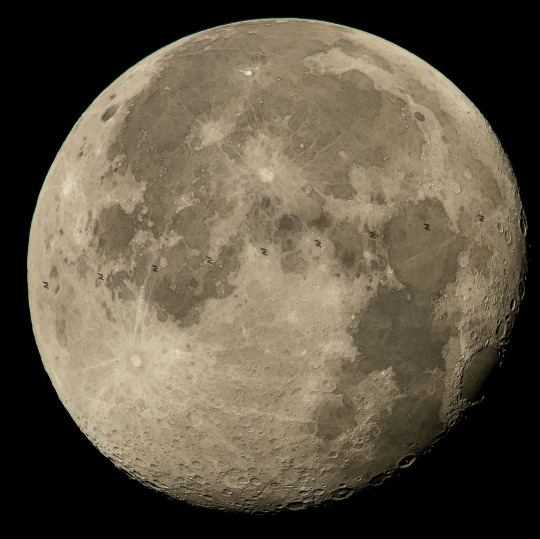
…October 28 is International Observe the Moon Night (also known as InOMN).
Here’s all you need to know to join in and celebrate:
1. One Planet. One Moon. One Night.
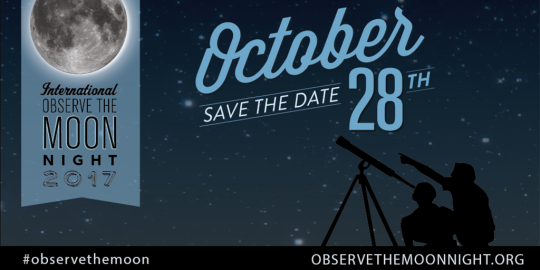
Everyone on Earth is invited to join the celebration by hosting or attending an InOMN event and uniting on one day each year to look at and learn about the Moon together.
2. What’s Up?
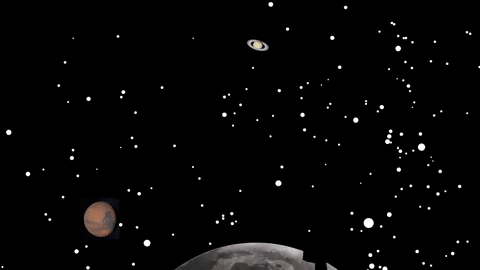
October’s night skies are full of sights, from the first quarter Moon on InOMN to Saturn making a cameo appearance above the Moon October 23 and 24. Watch our What’s Up video for details.
3. Be Social
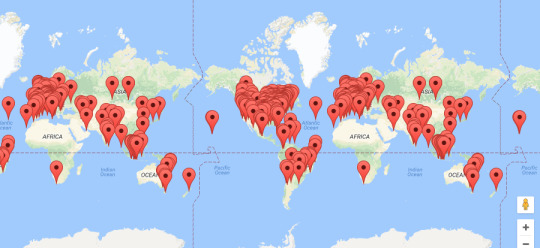
Hundreds of events are planned around the globe. Click the top link on this page for a handy map. You can also register your own event.
4. Don’t Just Stand There
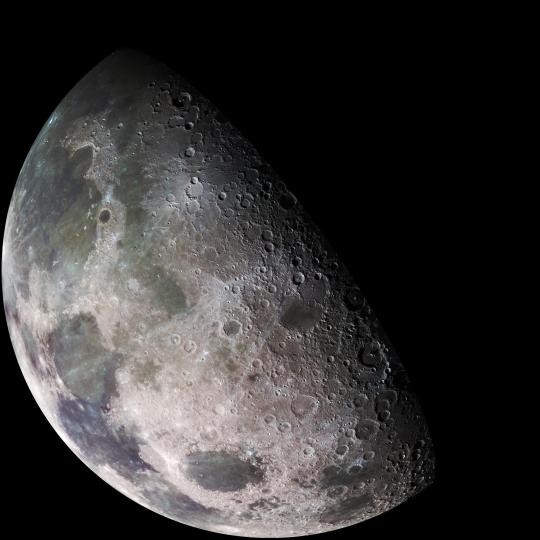
Here are some activities for enhanced Moon watching.
5. Impress Your Friends with Moon Knowledge

Download InOMN flyers and handouts, Moon maps and even some pre-made presentations. There’s even a certificate to mark your participation.
6. Guide to the Face of the Moon
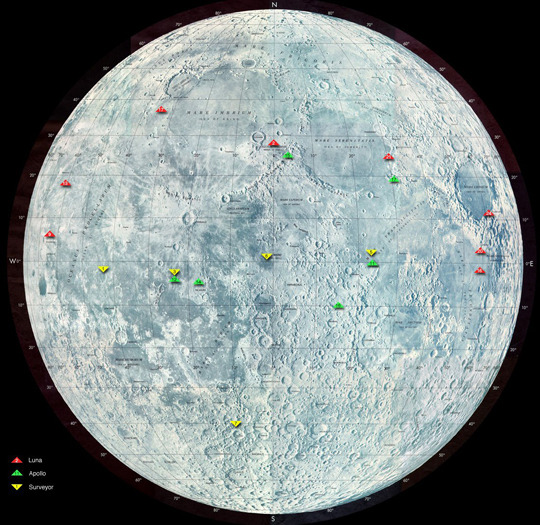
Almost dead center on the Earth-facing side of the Moon is the Surveyor 6 robotic spacecraft impact side. Apollo 12 and 14 are a bit to the left. And Apollo 11 - the first steps on the moon - are to the right. This retro graphic tells the whole story.
7. Moon Shots

NASA photographers have done some exceptional work capturing views of the Moon from Earth. Here are a few galleries:
You can’t have a solar eclipse without the Moon.
The 2016 “Supermoon” was pretty spectacular.
The Moon gets eclipsed, too.
That IS a Moon - AND the International Space Station.
The Moon is always a great photo subject.
Some spooky shots of the 2014 “Supermoon.”
And 2013.
Tips from a NASA pro for photographing the Moon.
8. Walking on the Moon
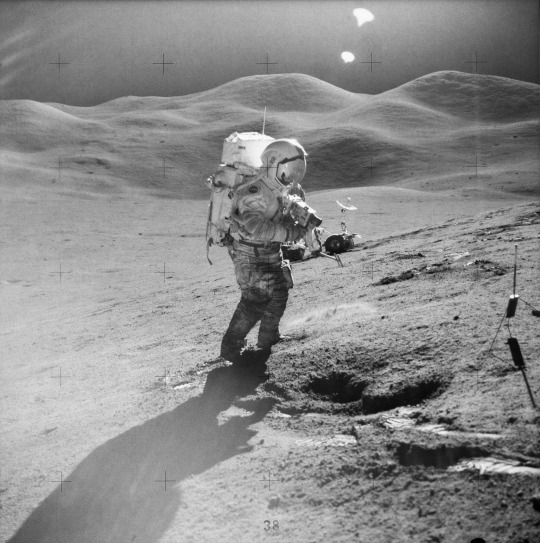
Twelve human beings walked on the face of the Moon. Here are some of the best shots from the Apollo program.
9. Moon Watch
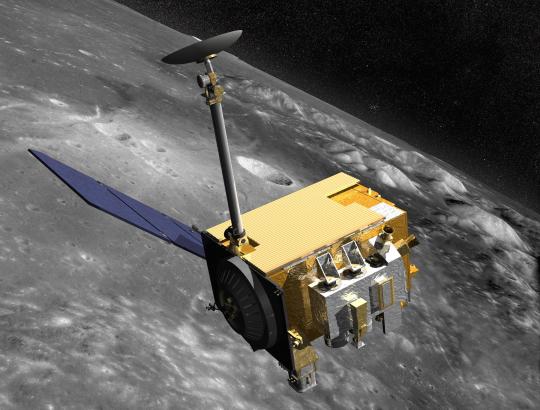
Our Lunar Reconnaissance Orbiter is up there right now, mapping the moon and capturing some spectacular high-resolution shots.
10. Keep Exploring
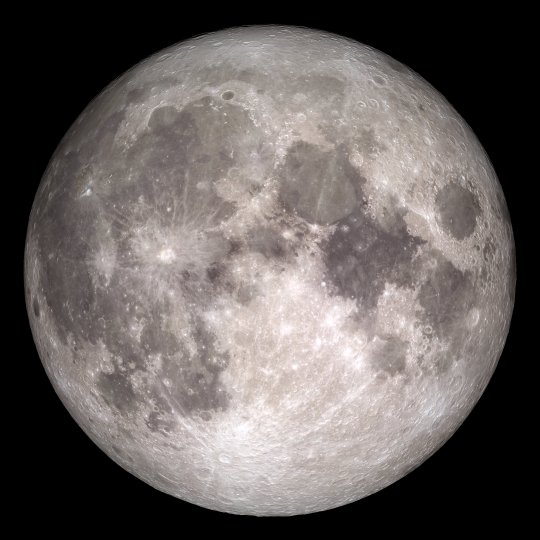
Make our Moon portal your base for further lunar exploration.
Check out the full version of ‘Ten Things to Know This Week’ HERE.
Make sure to follow us on Tumblr for your regular dose of space: http://nasa.tumblr.com.
3K notes
·
View notes
Photo



Looking for a Plan B for Planet Earth?
On October 6, 1995, astronomers Didier Queloz and Michel Mayor made an announcement that while it had been long anticipated was still stunning: they had discovered the very first exoplanet orbiting around a main sequence star, 51 Pegasi. Although three other exoplanets (one orbiting gamma Cephei, discovered in 1988 by the Canadian astronomers Bruce Campbell, G. A. H. Walker, and Stephenson Yang, confirmed in 2003; and two planets orbiting PSR 1257-12 discovered by radio astronomers Aleksander Wolszczan and Dale Frail in 1992) had been discovered prior to Mayor and Queloz’s announcement, 51 Pegasi was the first exoplanet to be discovered orbiting a main sequence star that is very much like our sun, and therefore thought capable of supporting life. The official name of this exoplanet is 51 Pegasi b, the lower case b denoting that the star has a companion that is not also a star (as in binary systems), and also referring to its unofficial name of Bellerophon. Bellerophon was the name of the hero from Ancient Greek mythology who tamed the Pegasus. It has since been noted that this planet orbits its star very close and probably has surface temperatures in excess of 1200 degrees, making it unfit for most of the life as we know it on earth.
The word exoplanet is a combination of the Ancient Greek root word prefix exo- meaning outside and the word planet. The word planet entered English as a scientific term from the Old French word planète, which came in turn from Late Latin planeta, which was itself a borrowing from the Ancient Greek (asteres) planetai meaning wandering (stars), from the verb planasthai meaning to wander. It took its modern meaning around 1630.
Constellation map courtesy Torsten Bronger. Artist’s concept of 51 Pegasi b courtesy Debivort. Image of 51 Pegasi courtesy NASA, all used with permission under a Creative Commons 3.0 license.
43 notes
·
View notes
Photo




The Space Race Begins!
Today is the 60th anniversary of the launch of Sputnik, but the first use of the word satellite to indicate a man-made object was 1936, over twenty years before the Russians actually created a viable satellite with their launch on October 4, 1957.
The word Sputnik-(in Russian Cпутник-1-anticipating more satellites, the Russians already called it Sputnik 1) is the combination of the Russian preposition c- (the s- sound, when added to the beginning of a Russian word means with) and the Old Church Slavonic root word poti meaning aroad, way or journey, ultimately meaning a traveling companion. Sputnik 1 broadcast its simple radio signal for 22 days before falling silent in at the end of October, 1957. Roughly 2 feet in diameter and weighing almost 200 pounds, Sputnik launched Russia to the forefront of the space race. Even most Russians, though, were unaware of the significance of the event-the ‘headline’ event in Pravda (see image above) did not hit the front page of the newspaper until October 6, although it made the front page of the New York Times on October 5!
Who won the Space Race? Depends on when it began, but it also depends on where the race is now and where it will end. When the Space Race was at its height, no one could have imagined a day when a continously manned Space Station would be jointly run by the United States and Russia with a consortium of nations contributing. We are all winning the Space Race!
#science#sputnik#russian#nasa#space#rockets#satellite#etymology#history#otd#on this day#on this date
145 notes
·
View notes
Photo

The Little Green Men
The Little Green Man is 50 years old today! On this day in 1967 astronomer Jocelyn Burnell Bell found an unusual object blinking in a dark corner of the sky in the constellation Vulpecula. With a period of 1.3373 seconds and a pulse width of 0.04 second it was the first radio pulsar discovered, although Bell and her Ph.D. advisor astronomer Antony Hewish had no idea what exactly they were seeing. Given the regularity of the signal, they briefly (and mostly jokingly) considered the possibility that they had stumbled upon evidence of extra-terrestrial intelligence, and dubbed it LGM1, for Little Green Men 1. According to Bell:
We did not really believe that we had picked up signals from another civilization, but obviously the idea had crossed our minds and we had no proof that it was an entirely natural radio emission. It is an interesting problem - if one thinks one may have detected life elsewhere in the universe how does one announce the results responsibly? Who does one tell first?

Thomas Gold and Franco Pacini suggested that pulsars were in fact pulsating neutron stars, confirmed with the discovery of a second pulsar in the Crab Nebula. The next year in March 1968, The Daily Telegraph was first to publish the new word:
An entirely novel kind of star came to light on Aug. 6 last year and was referred to, by astronomers, as LGM (Little Green Men). Now it is thought to be a novel type between a white dwarf and a neutron [sic]. The name Pulsar is likely to be given to it. Dr. A. Hewish told me yesterday: “… I am sure that today every radio telescope is looking at the Pulsars.”
The word itself was a combination of pulsating and star, a very literal and descriptive explanation of what scientists were seeing. Today that first pulsar is known variously as CP 1919, PSR B1919+21 and PSR J1921+2153.

Pulsars are so unique that NASA used them as intergalactic locators, drawing a map on the Pioneer plaques to allow extra-terrestrial intelligences to find planet Earth.

In 1974 Antony Hewish became the first astronomer to win a Nobel Prize in Physics, with a bit of controversy surrounding the award as Bell (who actually discovered the pulsar) was not co-awarded the prize.
All images used under CC 3.0 license.
321 notes
·
View notes
Photo

Dolly at 20
Twenty years ago today on February 22, 1997, Ian Wilmut, Keith Campbell and colleagues at the Roslin Institute, announced the existence of a 7 month old sheep named Dolly, the product of cloning. She was cloned using and adult cell and born on July, 5, 1996 and raised under the auspices of the UK Ministry of Agriculture and Scottish company PPL Therapeutics. A Dorset Finn sheep, Dolly lived for six and half years before she was euthanized due to illness. Dolly was created with a process called somatic cell nuclear transfer, in which a donor cell (in this case and adult cell from another sheep) has the nucleus removed that is then transfered into an unfertilized egg cell (an oocyte) which in turn has had its cell nucleus removed to make way for the donor nucleus. The host cell is then stimulated and implanted into a host sheep for gestation. Although other animals had been cloned before Dolly, Dolly is celebrated as the first ‘clone’ because her donor cell came from an adult cell.

The word clone entered English as a noun used in botany in 1903 from the Ancient Greek word klon (κλον) meaning a twig or spray, related to klados (κλαδος) meaning a sprout, young offshoot, branch. Botanists used the word to describe the results of the techique of grafting a shoot of one plant or tree onto another. The word clone (verb) wasn’t used until 1959, and it wasn’t until the 1970s that clone was used in connnection with animals and humans. Since Dolly, scientists have successfully cloned many other animals, including pigs, horses, goats, and deer.
Image of ‘v’ graft courtesy ghadjikyriacou, via flickr, used with permission under a Creative Commons 3.0 license.
175 notes
·
View notes
Photo

Discovering the Structure of DNA
On February 21, 1953, Francis Crick and James Watson discovered the structure of deoxyribonucleic acid (DNA) using unacknowledged photographs and research by their colleague Rosalind Franklin. They had considered many other candidates for the structure, including single and triple strand helices before deciphering the structure. Franklin’s x-ray crystallography (image below)

would provide the missing essential clue they needed to decipher the structure. They would publish a paper that same year describing their discovery, but the significance of the discovery was largely overlooked by the general public for over a year. Today it stands as one of the most remarkable milestones in the history of science.
The word deoxyribonucleic is a compound word formed around the main root word ribose, which arrived in English in 1892 via the German word Ribose which was itself borrowed from the English word of 1880 arabinose, a sugar derived from gum arabic. The word nucleic comes from the Latin word nucleus meaning a kernel around 1700, from the Latin diminutive nucula meaning a little nut. It did not take the meaning of a central characteristic or attribute until 1762. It wasn’t applied to cellular structures for another 70 years around 1862. The -oxy- root comes from the Ancient Greek word οξυς (oxys) meaning sharp or pointed (sharing the earlier common root word that gave the Latin word acer with the same meaning and ultimately the English word acid). The de- prefix is a Latin preposition meaning down from, off or away from, used mainly in English compound words as a privative, meaning that something lacks something.
#deoxyribonucleic#dna#watson and crick#rosalind franklin#german#latin#etymology#history#words#science
132 notes
·
View notes
Video
youtube
Happy Birthday to the Elements, I guess?
Today is the birthday of the Periodic Table of the Elements, created by Russian scientist Dmitry Mendeleev, first published on this date on February 17, 1869 (old Russian calendar). While the word element has been around for a very long time and even had basically the same definition the entire time, it was not until the 18th century that the word attained its fullest scientific sense. Our word comes from the Latin word elementum meaning rudiments, first principles, basic constituents. A modern definition usually specifies the atomic nature: any of the fundamental substances that consist of atoms of only one kind and that singly or in combination constitute all matter.
Just before his execution at the hands of Robsepierre in the French Revolution, Antoine Lavoisier published his ‘Elements of Chemistry’, a list of 33 chemical elements. For the next fifty years scientists rushed ahead to discover and identify these ‘elements’. By 1869 there were 56 elements identified, when Mendeleev published the first ‘Periodic Table’ organizing the elements into groups and families based on the similarity of their properties. Despite personal problems, Mendeleev was stunningly successful with the periodic table-correctly predicting as yet to be discovered elements and their properties based on his understanding of periodicity. Today there are 118 known elements, of which 92 are naturally occurring here on Earth. Scientists differ on the details of the next elements to be discovered, but most agree that more will be.
Watch the video, then check out the extremely cool website by Michael Dayah. I highly recommend spending some time with both the video and ptable-the amount of data available is astonishing, and scrolling through the data sets to see how elements are related in dozens of different ways really helps illuminate the subject. Created in October 1997, but still very useful and very well done. Not many programs or websites with that kind of longevity! Click here if the video doesn’t redirect: www.ptable.com
Dictionary definition courtesy http://www.merriam-webster.com
100 notes
·
View notes
Photo

Happy Valentine’s Day?!?!
Look, instead of spending the day messing around on the internet looking for a last minute reprieve, you really need to be out there finding something special for the one you love. But in the meantime, take a quick science break through space and time to learn a few odd facts about the human heart. What is the connection, for example, between deep space and human anatomy? Begin with the etymology of meteor, a word largely unchanged from its Ancient Greek roots. Similarly, the word aorta has changed very little since it was coined by no less an authority than Aristotle to describe the largest artery exiting the heart. Both used the Ancient Greek root aeirein: the word Aristotle formed was aorte meaning literally what is hung up came from the verb aeirein meaning to lift, heave, raise. In the case of meteor, it meant after, up, over. Here, it indicates the both the location and function of the aorta-to lift blood up and away from the heart. HAPPY VALENTINE’S DAY! Now turn off your computer and go find some chocolate!
GIF of a beating human heart courtesy bonafide-v via tumblr.
97 notes
·
View notes